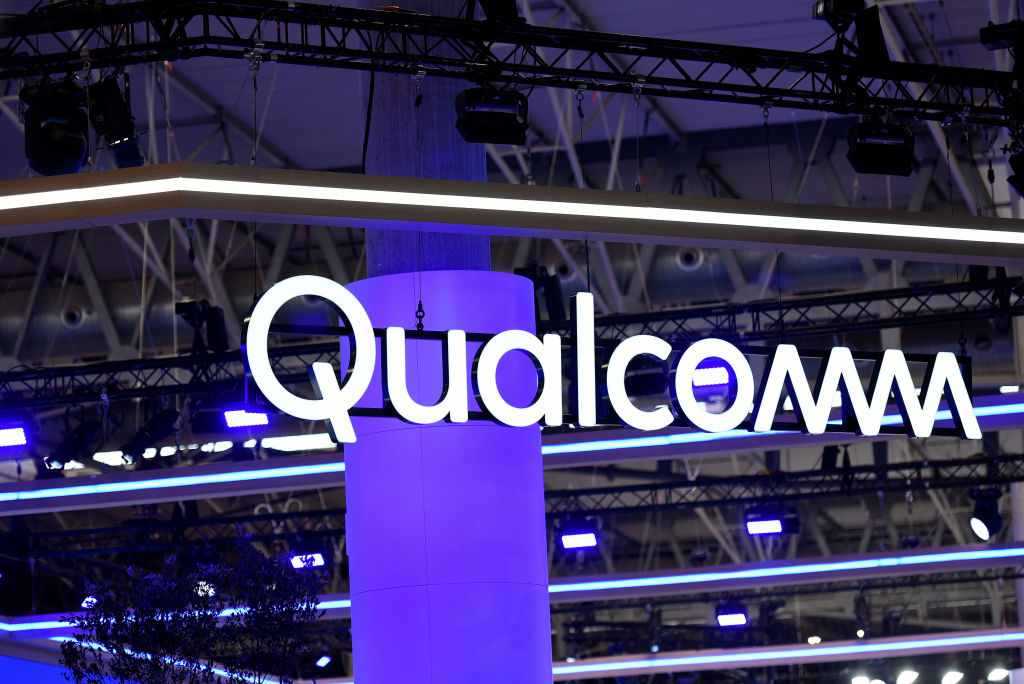By Lawrence Carrel
If the performance of Tesla Motors on its first day of trading is any indication, the market for initial public offerings, moribund for much of the past two years, may be reviving. Shares of Tesla (symbol TSLA), an unprofitable maker of electric cars, surged 41% on June 29. What makes the jump especially noteworthy is that it occurred on a day when the Dow Jones industrials cratered 268 points, or 2.6%.
Tesla made the biggest splash, but others have also come to market recently with successful IPOs. One is CBOE Holdings (CBOE), the holding company for the Chicago Board Options Exchange, a market for trading listed stock options. Another is AutoNavi Holdings (AMAP), a Chinese maker of digital navigation systems for autos. They posted first-day pops of 12% and 8%, respectively. (In what may be the largest IPO ever, Agricultural Bank of China went public on July 6 on exchanges in Hong Kong and Shanghai, but not in the U.S.)
From just $107.88 $24.99 for Kiplinger Personal Finance
Become a smarter, better informed investor. Subscribe from just $107.88 $24.99, plus get up to 4 Special Issues

Sign up for Kiplinger’s Free Newsletters
Profit and prosper with the best of expert advice on investing, taxes, retirement, personal finance and more - straight to your e-mail.
Profit and prosper with the best of expert advice - straight to your e-mail.
And IPO investors are anxiously waiting for Facebook to sell shares in what would almost certainly be the hottest offering since Google (GOOG) went public in 2004. A recent venture-capital investment in the social-networking stalwart values Facebook at a cool $23 billion, although the company says that it’s in no rush to go public.
Experts say now is a great time to dip your toes into IPOs. Unable to get loans from tight-fisted banks, many startups have had to sell stock to find the cash necessary for survival and growth. That can mean good deals for investors. A company may have to sell a large portion of itself to raise a certain amount of money. Or if it wants to limit the percentage sold to the public, it may have to accept a low share price. “It’s a buyers’ market,” says David Menlow, president of IPOfinancial.com, a Millburn, N.J., research firm.
Why should individuals care about IPOs? Because they give investors a chance to get in on small, fast-growing companies at the bottom floor. Companies can raise cash in the capital markets in one of two ways: taking on debt or selling stock. An initial public offering is the moment when a private company goes public. To generate capital, insiders, such as company founders and private investors, sell part of their ownership stake to stock-market investors. A company can use cash raised in an IPO to grow the business, pay down debt, give employees and insiders an opportunity to cash in their shares, or form some combination of all three.
Two kinds of investors buy IPOs: speculators, known as flippers, who sell after garnering a big first-day pop in the share price, and those who want to hold for the long term. Flippers long for the days of the technology bubble, when Internet IPOs rocketed more than 100% on their debut. Long-term investors search for the next Microsoft (MSFT). The software giant leapt 32% in its first day -- and those who held until now have seen a return of almost 32,000% (despite the stock being down 42% over the past ten years).
Looking at the IPO Calendar
Bloomberg reports that in the second quarter, 91 companies filed with the Securities and Exchange Commission to sell $23.6 billion of shares. Some are familiar names, such as General Motors, hospital chain HCA, retailer Toys “R” Us, consulting firm Booz Allen Hamilton and Nielsen Holdings, the television-audience rating company. Most of these are formerly public companies that were bought by private-equity firms or, as in the case of GM, that essentially became a private company after being rescued by the U.S. government.
However, the best reason to buy an IPO is to partake in the growth of a small, young company, and the coming months promise some compelling opportunities. Among them:
• Green Dot provides reloadable, prepaid debit cards to people without bank accounts. Profitable for the past four years, the Monrovia, Cal., company saw earnings in the March quarter jump 20% from the previous year, to $12.8 million. In June, Wal-Mart Stores bought a stake in Green Dot.
• GameFly is the Netflix of video games. The Los Angeles–based online rental service has been profitable the past two years, although net income for the nine months ended December 31 fell 67%, to $1.4 million. However, revenues grew 18%, to $63.2 million, over the same period.
• Zipcar offers a car-sharing service that allows clients to rent autos by the hour after paying an annual fee. The Cambridge, Mass., company’s revenues jumped 24% in 2009, to $131.2 million, and its losses narrowed 68%, to $4.6 million. Zipcar lost an additional $5.3 million in the first quarter of 2010. One potential shortcoming of the rental business: Barriers to entry are virtually nonexistent.
IPOs carry the risks associated with all stocks, plus others unique to the breed. If you invest in a young, growing company, you’re typically putting your money in the hands of unproven managers. If you’re investing in a large, mature company, you’re usually buying shares of a company whose main holders -- typically private-equity investors -- want to cash in their chips now. Large IPOs often hit the market bogged down with debt. And, of course, if you can’t buy shares at the offering price -- the price at which insiders sell to the market -- you often end up being the dupe who buys from the flippers at the top of the pop.
Getting the IPO
Individuals who want to get in on a hot IPO will find the process difficult. Typically, underwriters sell to institutional investors. Retail investors sometimes get shares, but it all depends on your relationship with the broker. Brokers are guarded in discussing how they determine whether a client gets in. For example, a spokesman for Morgan Stanley Smith Barney says the brokerage’s customers must be “qualified,” which typically means a client must have at least $1 million with the firm and have a high tolerance for risk “because IPOs are riskier than other investments.”
Retail investors should look to discount brokers. Fidelity has an arrangement to get shares in deals led by private-equity firm Kohlberg Kravis Roberts & Co. Fidelity clients need a minimum of $100,000 in certain assets or must make at least 36 trades a year.
Then again, if you are able to get in on an IPO, it may be a club you don’t want to belong to. “If you can get in at the offering, it’s probably a bad idea,” says Tom Taulli, coauthor of the book Investing in IPOs. “If it’s a hot idea, they’re going to give it to clients who make them the most money. If you get in, you can assume it’s not hot.”
No Rush
In the current market, experts say there’s no need to buy the first day. On average, IPOs priced in 2010 are down 11% (as of July 6), according to Renaissance Capital, a research and money-management firm in Greenwich, Conn. Within a week, Tesla had surrendered its first-day gain and was trading a dollar below its offering price.
Some experts recommend waiting until the company issues its first earnings report as a public company. During that time, you can see how the stock trades. Then, after the 40-day quiet period, underwriters can issue analyst reports on the stock. The first quarterly results will show whether management can deliver on earnings forecasts, manage expectations, and deal coherently on conference calls with analysts and money managers. Another reason to wait is to see what happens when the lock-up period ends. The lock-up prevents insiders from selling shares anywhere from three to 24 months after the IPO date. If everyone bails out when the lock-up expires, it means they don’t have much faith in the business.
Researching IPOs
Should you be lucky enough to get the offering price, you still need to do some fundamental research. After the SEC approves the offering, underwriters put together a prospectus, known as a red herring. This dense document contains high-level disclosures of the private company’s financials, both past and present. Check out the “Prospectus Summary,” which lists what the company does as well as its competitive advantages, risks and potential for making money.
In general, you want profitable companies with unique products or services that have high barriers to entry. “Companies that generate good fundamentals in a recession are definitely worth a look,” says Francis Gaskins, president of IPOdesktop, a financial-analysis site. Both IPOdesktop and Renaissance Capital offer IPO calendars and analysis of new issues.For about three weeks before the launch, the underwriters present a roadshow to build interest among institutional investors. Individual investors can find roadshows online at RetailRoadshow.
Profit and prosper with the best of Kiplinger's advice on investing, taxes, retirement, personal finance and much more. Delivered daily. Enter your email in the box and click Sign Me Up.
-
 CD Maturing Soon? Here's What to Do Next
CD Maturing Soon? Here's What to Do NextThese strategies of what to do when you have a CD maturing soon will have you maximizing returns even with rate cuts.
-
 How to Make 2026 Your Best Year Yet for Retirement Savings
How to Make 2026 Your Best Year Yet for Retirement SavingsMake 2026 the year you stop coasting and start supercharging your retirement savings.
-
 You Saved for Retirement: 4 Pressing FAQs Now
You Saved for Retirement: 4 Pressing FAQs NowSaving for retirement is just one step. Now, you have to figure out how to spend and maintain funds. Here are four frequently asked questions at this stage.
-
 If You'd Put $1,000 Into Coca-Cola Stock 20 Years Ago, Here's What You'd Have Today
If You'd Put $1,000 Into Coca-Cola Stock 20 Years Ago, Here's What You'd Have TodayEven with its reliable dividend growth and generous stock buybacks, Coca-Cola has underperformed the broad market in the long term.
-
 If You Put $1,000 into Qualcomm Stock 20 Years Ago, Here's What You Would Have Today
If You Put $1,000 into Qualcomm Stock 20 Years Ago, Here's What You Would Have TodayQualcomm stock has been a big disappointment for truly long-term investors.
-
 Dow Adds 314 Points to Thanksgiving Rally: Stock Market Today
Dow Adds 314 Points to Thanksgiving Rally: Stock Market TodayInvestors, traders and speculators enjoy the best Thanksgiving Week gains for the major stock market indexes in more than a decade.
-
 Nasdaq Rises 2.7% as Musk Tweets TSLA Higher: Stock Market Today
Nasdaq Rises 2.7% as Musk Tweets TSLA Higher: Stock Market TodayMarkets follow through on Friday's reversal rally with even bigger moves on Monday.
-
 Dow Dives 797 Points as Government Opens: Stock Market Today
Dow Dives 797 Points as Government Opens: Stock Market TodayThe process of pricing and re-pricing realities old and new never stops, and next week promises to be at least as exciting as this week.
-
 Stocks Bounce But End With Big Weekly Losses: Stock Market Today
Stocks Bounce But End With Big Weekly Losses: Stock Market TodayThe stock market rout continued on Friday, but a late-day burst of buying power brought the main indexes off their session lows.
-
 Elon Musk's $1 Trillion Pay Package Passes: What's at Stake for Tesla Stock
Elon Musk's $1 Trillion Pay Package Passes: What's at Stake for Tesla StockMore than 75% of Tesla shareholders voted to approve a massive pay package for CEO Elon Musk. Here's what it means for the Mag 7 stock.
-
 If You'd Put $1,000 Into Home Depot Stock 20 Years Ago, Here's What You'd Have Today
If You'd Put $1,000 Into Home Depot Stock 20 Years Ago, Here's What You'd Have TodayHome Depot stock has been a buy-and-hold banger for truly long-term investors.